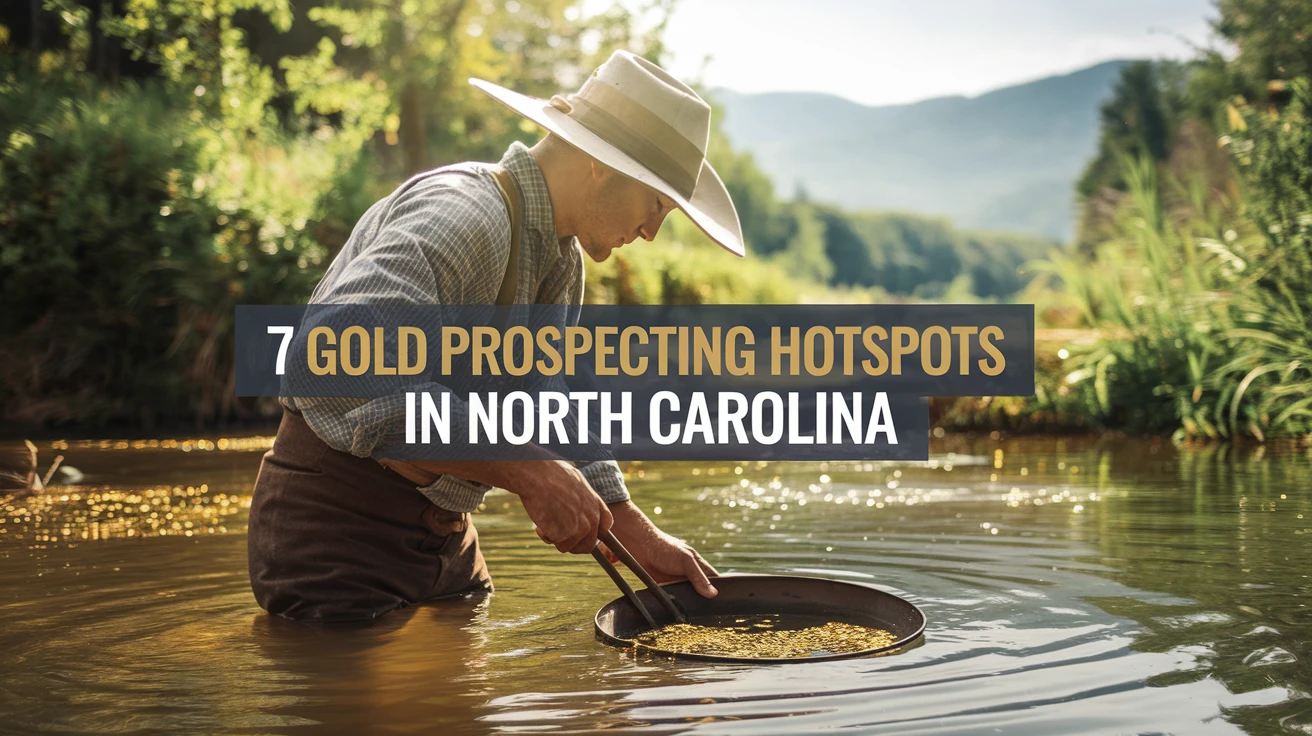
North Carolina holds a special place in American gold mining history as the site of the first documented gold discovery in the United States. Since Conrad Reed’s famous 1799 discovery of a 17-pound gold nugget in Cabarrus County, the state has been a magnet for prospectors seeking their fortune. Today, North Carolina continues to attract both amateur and experienced gold hunters, offering numerous locations where you can try your luck at striking it rich. In this comprehensive guide, we’ll explore seven of the most promising gold prospecting locations in the Old North State, complete with insider tips and essential information to help you make the most of your prospecting adventure.
1. Reed Gold Mine: Where NC’s Gold Rush Began
The Reed Gold Mine stands as a testament to North Carolina’s golden heritage. This historic site, located in Cabarrus County, offers visitors a unique blend of history and hands-on prospecting opportunities. While the original mine is now a state historic site, the surrounding area still yields gold for dedicated prospectors.
What You Need to Know:
- Operating Hours: Tuesday through Saturday, 9 AM to 5 PM
- Admission: Free for general entry, small fee for panning
- Equipment: Basic panning equipment provided with fee
- Best Season: Spring and Fall for comfortable temperatures
The site offers guided tours of the underground tunnels and provides educational programs about mining history. Modern prospectors can still find gold in the creek beds and tailings areas around the historic site, though you’ll need proper permits for areas outside the designated panning zones.
2. Gold Hill Historic Site: A Prospector’s Paradise
Gold Hill, located in Rowan County, was once one of the most productive mining areas in North Carolina. Today, it offers excellent opportunities for modern prospectors while maintaining its historic charm.
Prospecting Options at Gold Hill:
| Method | Success Rate | Equipment Needed |
|---|---|---|
| Panning | Moderate | Gold pan, classifier, shovel |
| Sluicing | High | Sluice box, shovel, bucket |
| Metal Detecting | Variable | Metal detector, digger |
The area features numerous old mine dumps and creek beds where gold can still be found. Local prospecting clubs often organize group outings, making it an excellent location for beginners to learn from experienced miners.
3. Little Meadow Creek: Where It All Started
Little Meadow Creek, where Conrad Reed made his historic discovery, remains a popular prospecting location. The creek and surrounding areas continue to produce gold, particularly after heavy rains.
Best Prospecting Practices:
- Focus on areas downstream from historic mining operations
- Look for black sand deposits, which often indicate gold presence
- Check creek bends and natural traps
- Visit after significant rainfall events
Recent finds in the area have included both fine gold and occasional small nuggets, proving that Little Meadow Creek hasn’t given up all its treasures just yet.
4. Uwharrie National Forest: Vast Prospecting Opportunities
The Uwharrie National Forest offers extensive prospecting opportunities across its 50,000 acres. This area contains numerous old mining sites and gold-bearing streams.
Recommended Areas Within Uwharrie:
| Location | Type of Gold | Accessibility |
|---|---|---|
| Badin Lake Area | Placer Gold | Easy |
| Ophir District | Lode Gold | Moderate |
| Coggins Mine Area | Both | Challenging |
Remember to obtain necessary permits and follow Forest Service regulations when prospecting in this area.
5. South Mountains Gold Belt: Rich in History and Gold
The South Mountains Gold Belt represents one of North Carolina’s most productive historical gold mining regions. This area extends through Burke, McDowell, and Rutherford counties, offering diverse prospecting opportunities.
Key Prospecting Areas:
- South Mountains State Park streams
- First Broad River and tributaries
- Historic mine tailings
- Abandoned mine areas (with proper permits)
The region’s complex geology has created numerous gold-bearing deposits, making it a promising area for both recreational and serious prospectors.
6. Thermal City Gold Mine: Modern Prospecting Convenience
Thermal City Gold Mine offers a unique combination of historical significance and modern amenities. This private operation provides prospectors with access to gold-bearing material and necessary equipment.
Available Services:
| Service | Cost Range | Duration |
|---|---|---|
| Gold Panning | $10-20 | All Day |
| Sluicing | $25-40 | All Day |
| Camping | $15-25 | Per Night |
The site’s consistent gold production and professional guidance make it ideal for beginners and families.
7. Gardner Hill Mine Area: Advanced Prospector’s Challenge
The Gardner Hill Mine Area represents one of the more challenging but potentially rewarding prospecting locations in North Carolina. This historic mining district requires more experience and preparation but can yield significant finds.
Essential Considerations:
- Obtain proper permissions from property owners
- Bring advanced prospecting equipment
- Research historical mining operations
- Practice safety measures in old mining areas
Success here often depends on thorough research and proper technique rather than luck alone.
Conclusion
North Carolina’s gold prospecting scene continues to thrive, offering opportunities for everyone from curious beginners to seasoned prospectors. Each location presents unique challenges and rewards, contributing to the state’s rich mining heritage. Whether you’re seeking a family-friendly adventure or a serious prospecting expedition, these seven locations provide excellent starting points for your gold hunting journey. Remember to always respect private property, obtain necessary permits, and follow local regulations to ensure a positive experience for everyone involved in the prospecting community.
Key Takeaways
- Always check local regulations and obtain necessary permits before prospecting
- Bring appropriate equipment and safety gear for your chosen location
- Join local prospecting groups for guidance and shared knowledge
- Research historical mining activities in your chosen area
- Consider seasonal conditions when planning your prospecting trips
Frequently Asked Questions
Do I need a permit to prospect for gold in North Carolina?
Yes, in most cases. Public lands require permits, and private lands require owner permission. State parks and historic sites often have specific regulations and designated areas for prospecting.
What is the best time of year for gold prospecting in North Carolina?
Spring and fall offer the most comfortable temperatures. After heavy rains can be particularly productive as new material gets exposed and concentrated.
What basic equipment do I need to start gold prospecting?
Essential equipment includes a gold pan, classifier, shovel, bucket, and proper safety gear. More advanced methods might require sluice boxes or metal detectors.
Can I keep the gold I find?
Yes, if you’re prospecting in permitted areas or private land with permission. Some locations may have specific rules about quantity limits or sharing arrangements.
Are there any gold prospecting clubs in North Carolina?
Yes, several prospecting clubs operate in the state, offering guidance, group outings, and shared knowledge for both beginners and experienced prospectors.
What types of gold can be found in North Carolina?
Both placer gold (in streams and soil) and lode gold (in rock formations) can be found. Most recreational prospectors focus on placer deposits.
Is it possible to make money gold prospecting in North Carolina?
While possible, most modern prospecting is recreational. Success requires experience, proper equipment, and significant time investment.
Are there age restrictions for gold prospecting?
Most locations welcome all ages, but children should be supervised. Some private operations may have specific age requirements for certain activities.
What safety precautions should I take while prospecting?
Wear appropriate clothing and footwear, bring water and first aid supplies, work with a partner when possible, and avoid unstable old mine workings.
How can I identify gold-bearing areas?
Look for historical mining sites, study geological maps, search for black sand deposits, and focus on areas where water flow naturally concentrates heavy minerals.

